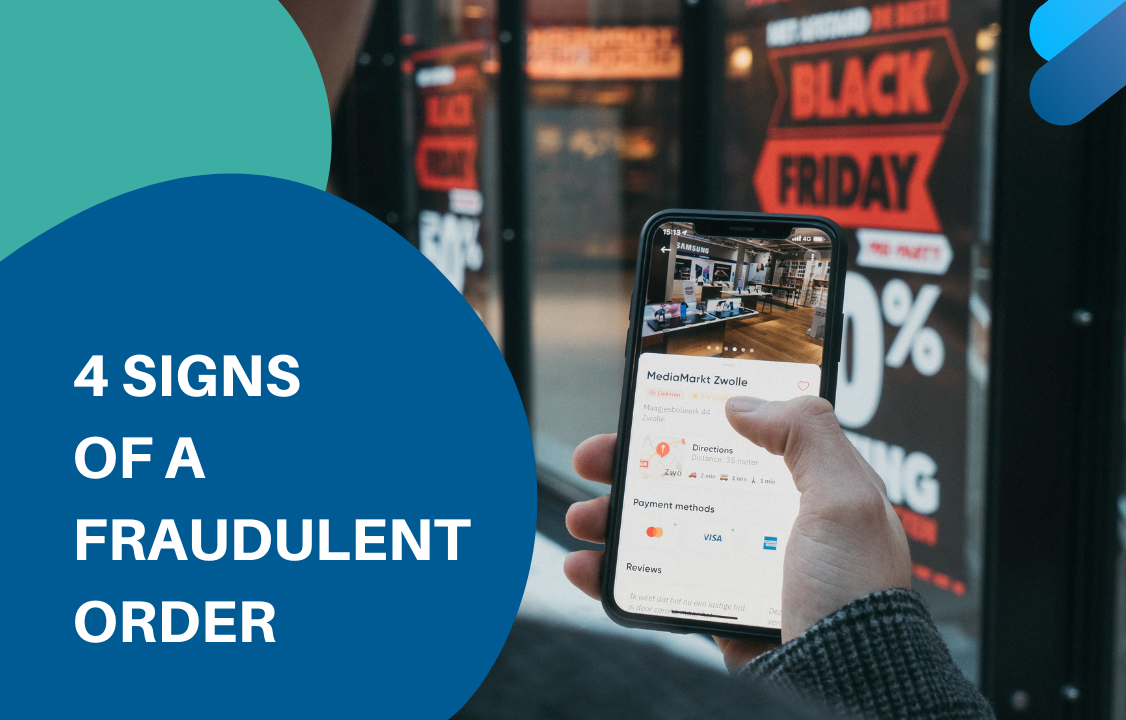4 Signs of A Fraudulent Order

Fraudulent order is the worst obsession for every business, especially in this internet era. Some common types of eCommerce fraud include: Clean fraud: when a credit card is stolen and used beyond the cardholder’s intention Card testing: when the theft make a purchase to see whether the card can be used and has a limit Account takeover fraud: when the theft get access to the users’ password and information on an eCommerce platform which allows them to make a purchase and get a refund Referral fraud: when fraudsters fake an account to mess up the merchants’ referral or loyalty program If not detected and addressed at the right time, your business will shoulder the money loss for the criminals. Yet, you can implement strategies that decrease your vulnerability to fraud order, among which the first step is to understand its nature. Below, we listed the 4 most common signs of eCommerce fraud ever merchants should beware of to avoid future risks. 1. Incompatible customer information The very first thing to identify a suspicious order is to look at the customer information. Does the email address match the customer’s name? Not everyone has their name attached to the email. However, in the most valid transaction, the email address would resemble some part in the buyer’s name. If your customer answers your email, it is probably a good order, for fraudsters often use bogus email accounts and don’t check them at all. Is the phone code consistent with the shipping address? It doesn’t make sense for a shipment within the United States to be accompanied by a phone number with the country code somewhere in Europe. Therefore, inspect if this is a mistake made by your customer or an actual act of fraudulent order. Is the billing address different from the shipping address? In fact, there are many reasons why your customer places different addresses for billing and shipment, such as when they’re buying a gift for a friend. However, if other criteria signal suspicion, it might deserve a closer look. 2. A large amount of order from new customer If you receive an order of $400 while your average order size is approximately $70, this should be taken into account, especially with first-time customers. Consumers are often very careful about their first order for they have yet to be sure about the quality. In this sense, large orders from a newly-created account are possibly a fraud. This possesses a sign that the fraudster is trying to get a one-time purchase before you cancel their card. As modern credit card technology allows for quick fraud detection, fraudsters understand that their chance is limited, thereby trying to maximize the purchase. 3. Many separate orders from one IP address Most of the online payment gateways allow merchants to capture IP addresses from the purchaser, which should be reviewed on a regular basis. Your team should be alerted when there are a lot of orders with different customer information coming from the same IP address. Customer information might change once in a while. However, different data from the same IP address at a time might be a tellable sign of fraudulent order. The solution is to investigate the transactions and block this IP address if necessary. 4. Suspicious international order For online merchants, it is exciting to expand your business to a new country or region. However, you should thoroughly consider these orders for safety reasons. SMEs often head to small and constant market penetration. Hence, a chain of four orders from a country you have never operated in before is typically not right. Another case is the order placed abroad but delivered domestically. According to experts, fraudsters often store the product in a safe house within the store’s domestic region and transfer them out of the country later, making it more difficult to track down their movement. Detect fraudulent orders with automation The most effective remedy to prevent a fraudulent order is to be proactive in your approach to fraud and payment. However, verifying every order is exceedingly challenging, especially in the high season. Therefore, you can rely on an automation platform to do the work. You can set up a workflow to notify your team about an order with a suspicious high value or a large number of items. Then your staff can take a closer look to decide whether the order is a fraud or not. Conclusion All in all, the best advice when encountering a fraudulent order is to stay calm and investigate it carefully. Communicatie with your customer about your suspicion and explain that it takes more time for the purchase to be completed. This way, you can prevent yourself from being misled by high-tech criminals.

